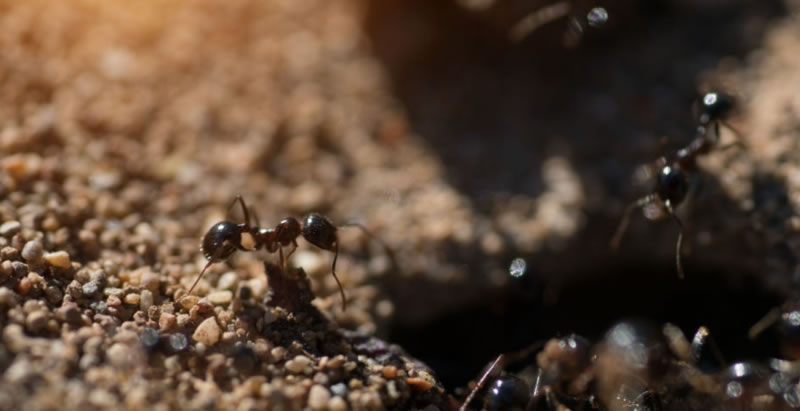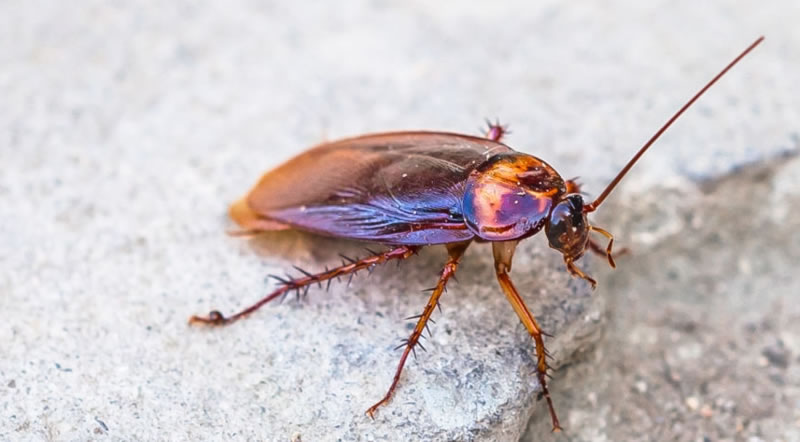Fun Facts about Pests
Interesting Pest Facts You Never Knew
Insects gross us out, cause diseases and damage homes and property, but they are also endlessly fascinating. Read on to discover amazing pest facts about common pests that invade homes.
Ants
Ants are able to lift 10 to 50 times their body weight. Relative to their size, they are among the strangest creatures on the planet. Ants communicate with each other by releasing chemicals known as pheromones. These are detected at the ends of their super-sensitive antennae. Ants don’t have ears, so they “listen” by feeling vibrations through the ground.
Ants live on every single continent except Antarctica. The largest ant colony ever found extends for 3,700 miles from northern Italy, through the south of France and onto Spain’s Atlantic coast. It is populated by a species of Argentine ant that was introduced into Europe about 100 years ago.
Most species have two stomachs. One is for their own use, and the other is to hold food to be shared with other ants. There are more than 12,000 known species of ant in the world.
Cockroaches
Pest Facts about Cockroaches. Cockroaches are not particularly fussy eaters and will eat almost anything. They’ll also wolf down each other if they’re hungry enough and if their infestations are too large for the available food source. Their cannibalistic tendency is a way to keep population numbers down when necessary.
Cockroaches are just like mice and rats in that they can squeeze through the tiniest of gaps or cracks. Thanks to their flexible exoskeleton, they can fit through an aperture that’s a quarter of the height of their bodies.
If you lop off a cockroaches head, you won’t kill it, at least not straight away. They can live for up to a week without their head because they don’t need their mouths to breathe. Like many insects, they breathe through tubes that are attached to openings on the body called spiracles.
Cockroaches may well have a bad reputation, but they’re not all pests. Of the roughly 4,000 recorded species we know of, only about 30 like to live where people reside. Cockroaches have been on the planet since the time of the dinosaurs.
Despite suggestions to the contrary, cockroaches would not be able to survive a nuclear explosion. Sure, they can withstand a lot more radiation than humans, but they could not tolerate the enormous heat energy of a nuclear event. In any case, there are much easier ways of getting rid of them.
Silverfish
Pest Facts about Silverfish. Silverfish can live for a long time, well a long time for the insect world. On average, silverfish live between three and six years. Silverfish are covered in silvery-grey scales and move from place to place in a fish-like manner.
Adult female silverfish can produce up to 20 eggs per day. They have varied tastes and in the home will eat paper, silk, linen, cotton, curtains, upholstery, wallpaper and even glue. If food is scarce, they’ll eat their own molted exoskeleton. The small, wingless insects do not transmit diseases to humans.
Bed Bugs
Bed bugs can live for several months without food, which means they can linger for a while in beds until a suitable food source (you) hoves into view. The small, oval, brownish insects are very good at finding hiding places that can make them difficult to spot.
They are not nocturnal creatures. If they feel safe, they’ll come out and feast on humans if they’re having a lie-in or taking an afternoon nap. A bed bug’s bite is painless because its saliva contains an anesthetic that increases the blood flow. It also allows the bloodthirsty insects to continue feeding without the victim noticing.
While bed bugs are a nuisance, they are not known to cause or spread diseases. However, some people can have an allergic reaction to the bites, which may need medical attention. To feed, a bed bug will insert its sharp proboscis into a victim’s skin. It takes about 10 minutes for them to be engorged with blood, which will last them for several days.
Spiders
Spiders prefer their food pre-digested in liquid form. Once their prey has been encased in silk or killed by venom, a spider will vomit digested fluid onto it to convert their food into a soup-like substance.
The majority of these ruthless mini predators have poor eyesight even though they have six or eight eyes. Consequently, they don’t rely on vision to find prey. Instead, they depend on smell, touch, taste, and vibrations.
According to scientists, spider silk is five times stronger than steel. Each strand of spider silk is about 1,000 times thinner than a human hair. All spiders are meat eaters except the Bagheera kiplingi, which is found in Mexico and Central America. Plants comprise the bulk of this jumping arachnid’s diet.
The world’s largest spider is the goliath bird eater tarantula of South America. It can grow to nearly 30 centimeters across with fangs that are 2.5 centimeters long. Although all spiders can produce silk, not all spiders can spin webs. Many spiders will eat each other, even members of their own species. Spiders try to avoid humans, which is why they tend to be found in attics, basements, and garages.
Termites
The average lifespan of termite queens is 25 years, and they can lay around 30,000 eggs per day. Termites eat non-stop and never sleep. They’re munching away 24 hours a day, seven days a week. Termites digest food with the help of microbes in their guts.
However, when born, they don’t have all the bacteria they need, so they engage in a practice known as proctodeal trophallaxis. The non-scientific term for this is eating each other’s poop. Good hygiene is important to termites. They devote a lot of their time to grooming each other to deter parasites and bacteria.
Termites eat the wood in your home from the inside out. They can feast for years without anybody noticing. So, a wooden structure may appear fine from the outside, but inside it is being hollowed out. Scientists reckon the total mass of termites on the planet outweighs humans.







